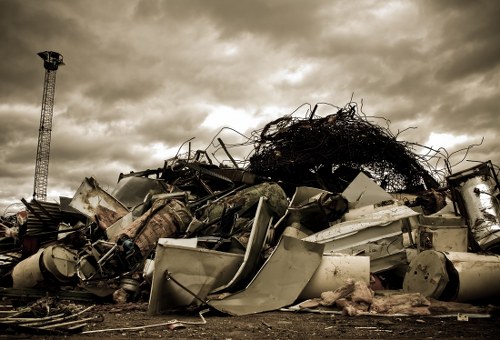Commercial Waste Reading: An In-Depth Analysis
 Commercial waste reading is a critical component for businesses aiming to maintain environmental responsibility and operational efficiency. By systematically analyzing waste outputs, companies can identify areas for improvement, reduce costs, and enhance their sustainability initiatives. This article delves into the various aspects of commercial waste reading, including methodologies, benefits, and best practices.
Commercial waste reading is a critical component for businesses aiming to maintain environmental responsibility and operational efficiency. By systematically analyzing waste outputs, companies can identify areas for improvement, reduce costs, and enhance their sustainability initiatives. This article delves into the various aspects of commercial waste reading, including methodologies, benefits, and best practices.
Understanding the different types of commercial waste is essential for accurate reading and management. Waste can broadly be categorized into organic, inorganic, hazardous, and recyclable materials. Each category requires specific handling and disposal methods to ensure compliance with environmental regulations and to minimize negative impacts on the ecosystem.
 Implementing an effective waste reading system begins with accurate data collection. Businesses must establish protocols for tracking waste generation, segregation, and disposal. Utilizing digital tools and software can streamline this process, providing real-time insights and facilitating informed decision-making.
Implementing an effective waste reading system begins with accurate data collection. Businesses must establish protocols for tracking waste generation, segregation, and disposal. Utilizing digital tools and software can streamline this process, providing real-time insights and facilitating informed decision-making.
Regular waste audits are a fundamental aspect of commercial waste reading. These audits involve evaluating the quantity and types of waste produced, identifying waste streams, and assessing the effectiveness of current waste management practices. The insights gained from audits enable businesses to develop targeted strategies for waste reduction and resource optimization.
One of the primary benefits of commercial waste reading is cost savings. By identifying inefficiencies and areas of excessive waste, companies can implement measures to reduce waste generation, leading to lower disposal costs and improved financial performance. Additionally, effective waste management can enhance a company's reputation, demonstrating a commitment to sustainability and corporate social responsibility.
 Technological advancements have revolutionized the field of commercial waste reading. Innovations such as automated waste sorting systems, IoT-enabled sensors, and data analytics platforms provide businesses with unprecedented capabilities for monitoring and managing waste. These technologies enhance accuracy, reduce manual labor, and offer actionable insights for continuous improvement.
Technological advancements have revolutionized the field of commercial waste reading. Innovations such as automated waste sorting systems, IoT-enabled sensors, and data analytics platforms provide businesses with unprecedented capabilities for monitoring and managing waste. These technologies enhance accuracy, reduce manual labor, and offer actionable insights for continuous improvement.
Training and education play a vital role in successful commercial waste reading. Employees must be knowledgeable about proper waste segregation, handling procedures, and the importance of waste management. Creating a culture of sustainability within the organization encourages active participation and fosters a sense of responsibility among staff members.
Regulatory compliance is another critical consideration in commercial waste reading. Businesses must stay informed about local, state, and federal regulations governing waste management to avoid penalties and ensure adherence to legal standards. Compliance not only mitigates risks but also reinforces the company's dedication to environmental stewardship.
 Collaboration with waste management experts and service providers can enhance a company's waste reading capabilities. These partners offer specialized knowledge, resources, and support to help businesses optimize their waste management processes. By leveraging external expertise, organizations can implement best practices and adopt innovative solutions tailored to their specific needs.
Collaboration with waste management experts and service providers can enhance a company's waste reading capabilities. These partners offer specialized knowledge, resources, and support to help businesses optimize their waste management processes. By leveraging external expertise, organizations can implement best practices and adopt innovative solutions tailored to their specific needs.
Measuring the effectiveness of commercial waste reading initiatives is essential for assessing progress and identifying areas for further improvement. Key performance indicators (KPIs) such as waste diversion rates, cost savings, and reduction in landfill contributions provide tangible metrics to evaluate success. Regularly reviewing these metrics ensures that waste management strategies remain aligned with organizational goals and sustainability objectives.
 In conclusion, commercial waste reading is a vital practice for businesses committed to sustainability and operational excellence. By adopting comprehensive waste reading systems, leveraging technology, and fostering a culture of environmental responsibility, companies can achieve significant benefits, including cost savings, regulatory compliance, and enhanced corporate reputation.
In conclusion, commercial waste reading is a vital practice for businesses committed to sustainability and operational excellence. By adopting comprehensive waste reading systems, leveraging technology, and fostering a culture of environmental responsibility, companies can achieve significant benefits, including cost savings, regulatory compliance, and enhanced corporate reputation.








